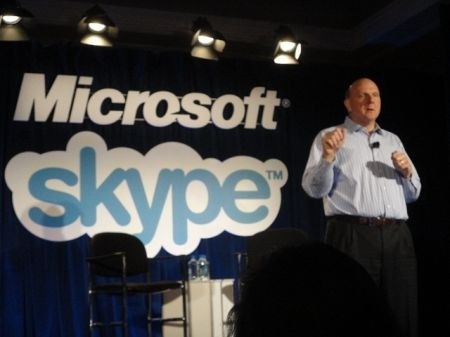Could Skype be the one communications client to rule them all?
Google has Google Voice (soon to be part of Hangouts, expanding their footprint for the ailing - or morphing - Google+ by forcing users to switch), Facebook has their Messenger client, there’s Viber and Line in the Voice space and WhatsApp and SnapChat delivering text and image messaging. The iPhone has Visual Voicemail and iMessage. Where is Microsoft fit in all of this?
 Microsoft acquired Skype a couple of years ago, and merged the huge Messenger user base into that, even thought the IM side of Skype could still learn some lessons from the product it replaced. They also have Lync for the Office space but while the server is robust the client doesn’t excite much. Currently there seems to be moves to bolt Skype onto other Microsoft products, like Office365 subscriptions, but adding value to existing products isn’t going to help drive adoption to the next level.
Microsoft acquired Skype a couple of years ago, and merged the huge Messenger user base into that, even thought the IM side of Skype could still learn some lessons from the product it replaced. They also have Lync for the Office space but while the server is robust the client doesn’t excite much. Currently there seems to be moves to bolt Skype onto other Microsoft products, like Office365 subscriptions, but adding value to existing products isn’t going to help drive adoption to the next level.
Adding ubiquitous, global utility to the product however would make it less of a sell and more of a challenge of scalability, especially given Skype’s proven cross-platform track record. Especially if it can happen in concert with a functional overhaul of the client to make it the single de facto “instant” communications client piece of the Microsoft story.
Voice Mail is still largely a relic of the early days of carriers. Reliable, but not user friendly or taking advantage of contemporary technology. Skype could address a lot of the issues by leveraging existing frameworks (e.g. “visual voicemail”) as well as other Microsoft technologies (Azure, Cortana and MAVIS speech recognition etc).
Imagine you are in a meeting. Your phone rings and you push the “end” button to transfer to voicemail (or your phone is turned off so it just redirects to the message center you have set up to override the carrier default). Rather than divert the user to your carrier where you have no real control, the call instead is transferred to your Skype account. There the outgoing message is delivered based on rules you set which could include forwarding the call on to an appropriate 3rd party, delivering an appropriate greeting and taking a message, or refusing to take a message and simply deliver an announcement depending on who the caller is.
Once a message is taken then the magic can begin as other parts of the Microsoft eco-system kick in. Voice recognition (leveraging technology from OCS/Exchange, Xbox, MAVIS and Cortana) transcribes the message and provides an SMS length summary as well as a full transcript. A push notification is sent to all your Skype clients (if you’re on a flight for instance, that message will wait until you log into a client) and give you the choice of reading the summary, the full transcript or listening to the message. From within the client you can respond - via a call, a text, an IM or an Email thanks to integration with your address book. Once the message is actioned (on any device) push messaging is, again, used to update the status on your other Skype clients (which are used to drive the “message waiting” indicator on all your devices - potentially including OCS connected desk phone - and keep them in sync).
Going beyond the basic messaging this could also be used, by publishing your Skype number rather than a carrier number, to facilitate personal “hunt groups” - the caller dials one number but the phone in your pocket and on your desk both ring at the same time with the call transferring seamlessly to the device you pick up on. Combining Skype with the OCS back-end would allow you to hand off a call from your mobile client to your desk phone (or vice versa). Rules would allow you to silence certain devices at certain times.
Over time, based on caller ID and corrections to the transcript provided by the recipient the speech to text engine could improve, learning new rules for each originating number. See also these two patent applications in reference to techniques for user corrections for text-to-speech services.
Google’s solution today is limited to Android devices running their full Play Services suite. The iOS solution only works on Apple’s phone. Facebook’s Messenger has potentially a huge reach but no real experience in running a telephony service, and do you want your social network knowing about your business calls. Other messaging solutions such as Viber and Tango are fragmented and struggle to offer cross platform solutions.
Skype is ubiquitous and can deliver much of this feature-set today. It is ideally positioned to extend both it’s consumer reach as well as act as the front end to corporate voice and IM communications. So how about it Microsoft?